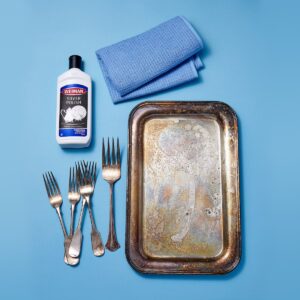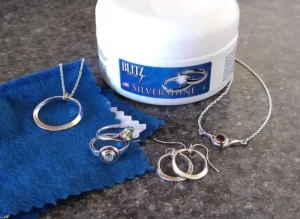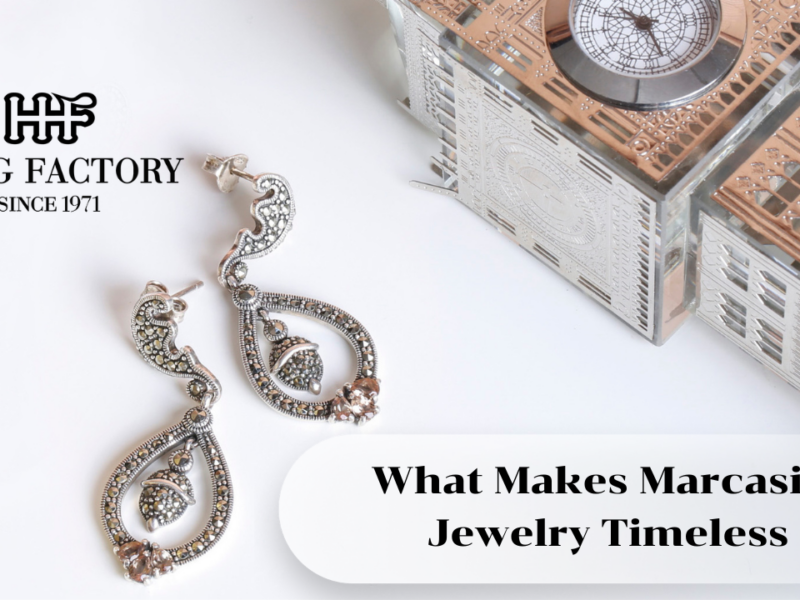Silver jewelry is elegant and timeless, but its beauty can be diminished by tarnish. Tarnish is a natural chemical reaction that darkens silver’s surface, making it lose its shine. Thankfully, there are many ways to clean silver at home or with commercial products. This article reviews the most common Silver tarnish cleaners and explores what works best for keeping silver sparkling. Marcasite stone
What is Silver Tarnish?

Tarnish forms when silver reacts with sulfur compounds, moisture, or other elements in the environment. Unlike rust, which weakens metals like iron, tarnish only affects the surface layer. Key features include:
- Black, gray, or yellow discoloration
- Affects appearance, not structure
- Caused by air exposure, humidity, and chemicals
- Reversible with proper cleaning
This makes tarnish a cosmetic issue that can be easily treated with the right methods.
Silver Tarnish Cleaners: What Works Best
Silver tarnish perception
When people hear Silver tarnish cleaners, they often imagine harsh chemicals. In reality, both natural and commercial cleaners can work effectively. The best cleaner depends on the level of tarnish, the type of silver, and whether gemstones are attached.
Common At-Home Cleaning Methods
- Baking Soda and Aluminum Foil
- Line a bowl with foil, add hot water, and baking soda.
- Place silver items inside and wait a few minutes.
- The tarnish transfers to the foil, leaving silver bright again.
- Works best for heavy tarnish.
- Soap and Warm Water
- Mix mild dish soap with warm water.
- Soak silver pieces, then gently scrub with a soft cloth.
- Ideal for light tarnish and delicate jewelry.
- Baking Soda Paste
- Combine baking soda with a few drops of water.
- Rub onto silver gently, rinse, and dry.
- Effective for stubborn tarnish on plain silver pieces.
- Toothpaste Method
- Apply a small amount of plain, non-gel toothpaste.
- Rub gently with a cloth, rinse, and dry.
- Polishes away light tarnish effectively.
Commercial Silver Tarnish Cleaners

- Silver Polishing Cloths: Pre-treated cloths remove tarnish easily, ideal for regular maintenance.
- Liquid Cleaners: Quick-dip solutions dissolve tarnish but must be used with caution, especially with gemstones.
- Cream and Paste Cleaners: Gentle abrasives that polish silver while protecting surfaces.
- Professional Products: Recommended for antique or valuable silver requiring careful treatment.
Commercial cleaners are convenient but should always be used as directed.
Pros and Cons of At-Home vs Commercial Cleaners
At-Home Methods
- Pros: Affordable, safe for most silver, effective on light to moderate tarnish.
- Cons: Time-consuming, less effective on antique or heavily tarnished items.
Commercial Cleaners
- Pros: Fast and powerful, effective on heavy tarnish, convenient.
- Cons: May damage delicate gemstones, require caution, can be more expensive.
Preventing Tarnish After Cleaning
- Store silver in anti-tarnish pouches or airtight boxes.
- Use silica gel packets to reduce humidity.
- Avoid contact with lotions, perfumes, and sweat.
- Wipe jewelry after each use to remove skin oils.
These steps extend the results of cleaning and maintain silver’s shine.
Silver tarnish cleaners come in many forms, from simple baking soda remedies to advanced commercial products. The best choice depends on the condition of the silver and personal preference. For light tarnish, homemade methods are affordable and safe. For heavy tarnish or antique items, professional or commercial cleaners may be necessary. By combining effective cleaning with preventive care, silver owners can ensure their jewelry remains radiant for years.


